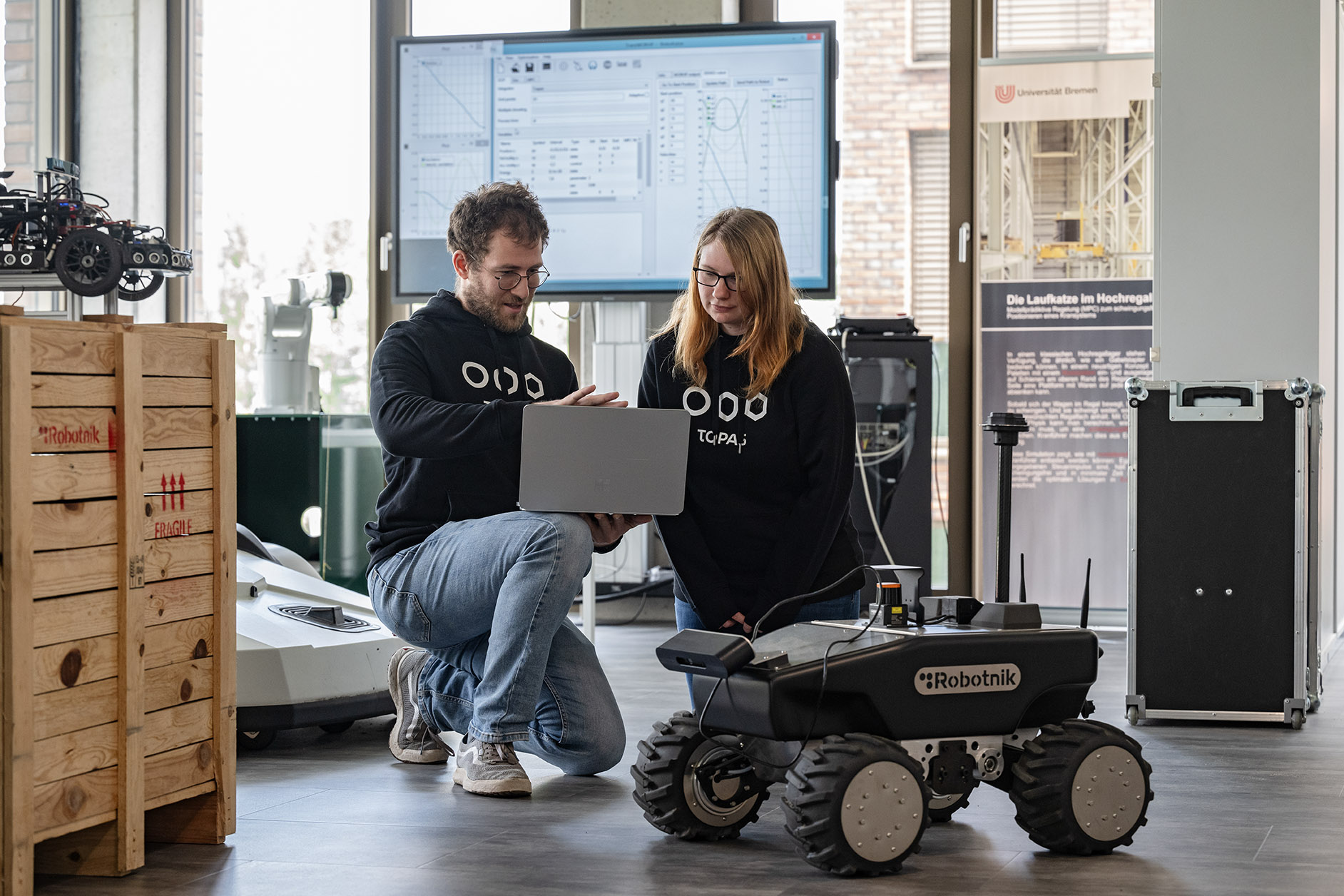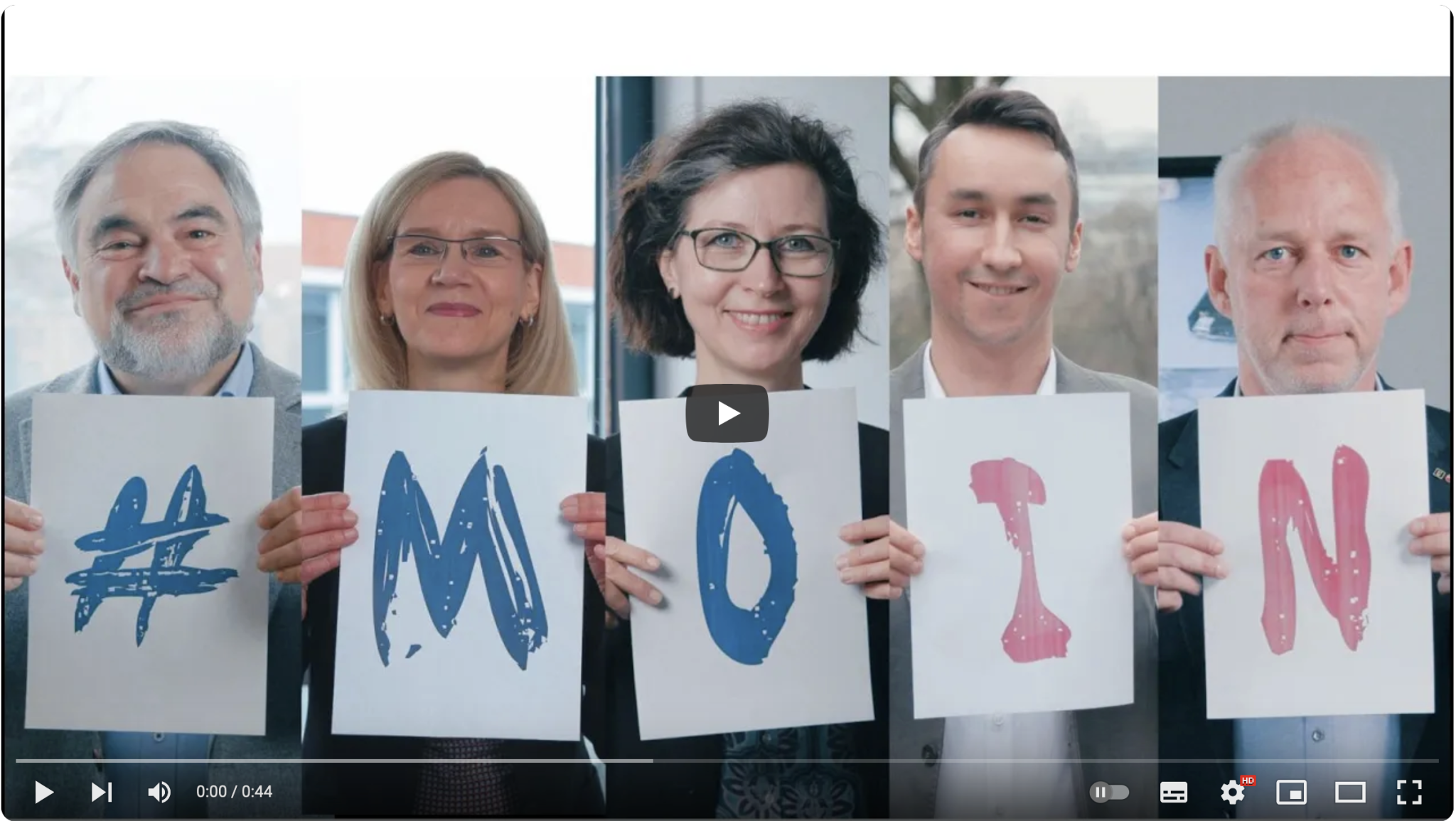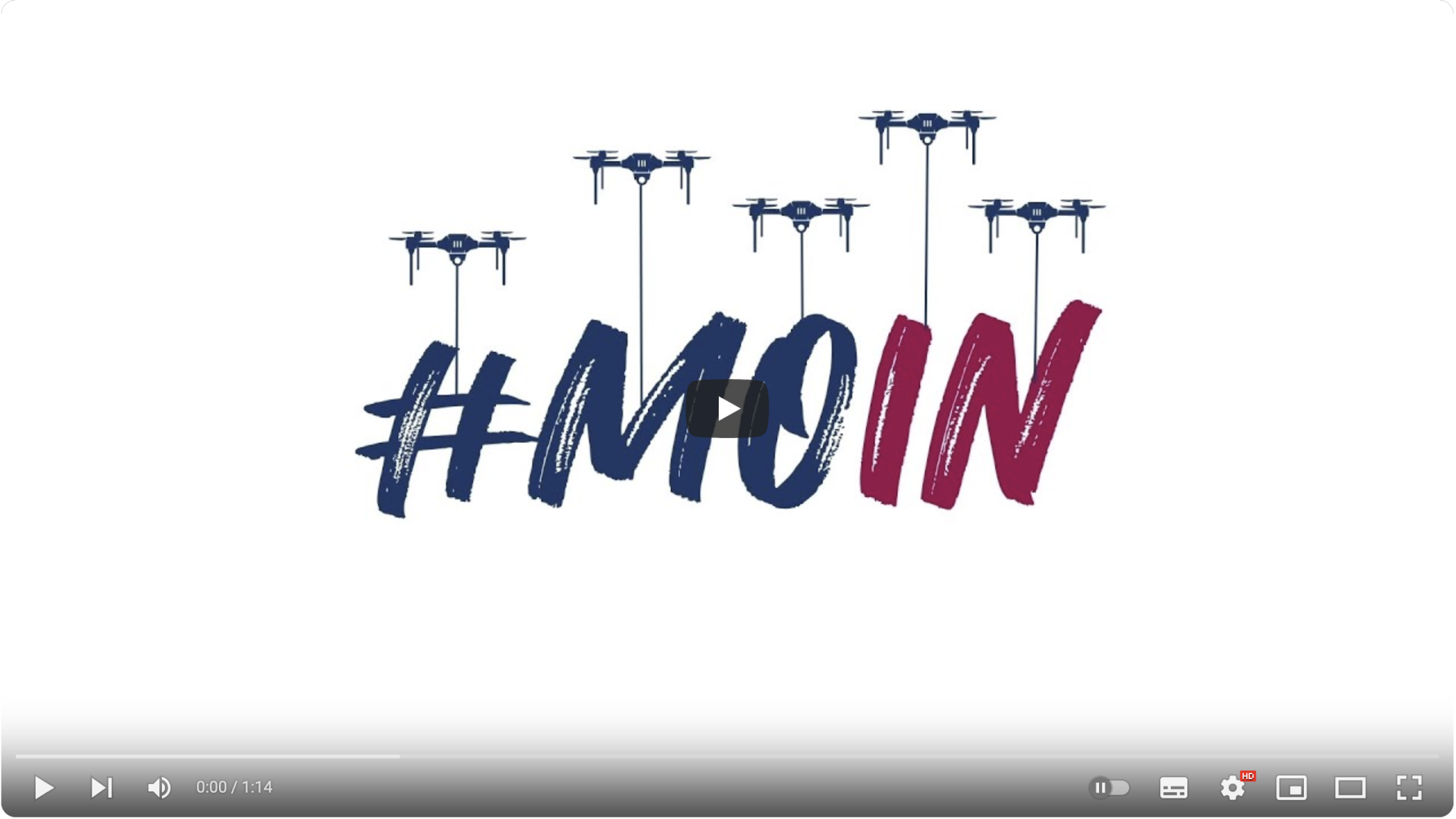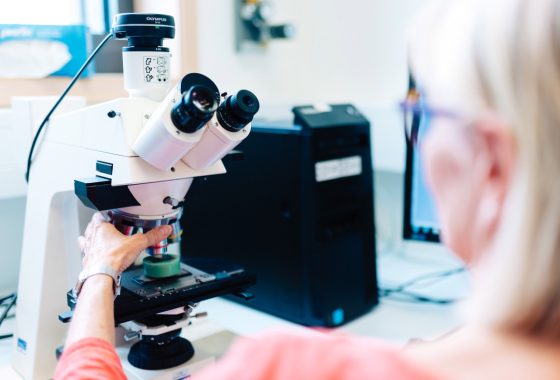#MOIN – Model region for industrial mathematics creates a new understanding of math in schools, industry, and society

The #MOIN project brings together numerous players in Bremen, Image: TOPAS Industriemathematik/Kortjohann
Mathematics is the basis of almost every technology that surrounds us – but it could be used much more in industry – in the form of industrial mathematics. The #MOIN initiative gives companies an advantage thanks to mathematically based algorithms and processes.
Gyro Gearloose once famously said, “Nothing is too difficult for an engineer”. But every now and then, even the Gyro Gearlooses of our time reach their limits – or do not even know what lies beyond them.
“Engineers are very inventive and can create amazing innovations with their tools. But there is a whole range of algorithms and methods that mathematicians in particular use. If we combine this knowledge with that of industry, we can create even greater innovations,” says Mitja Echim. This is by no means just an assertion – the Managing Director of Bremen-based TOPAS Industriemathematik Innovation gGmbH is one of the initiators of the “#MOIN – Model Region Industrial Mathematics”. His start-up works right at the interface between scientific mathematics and industrial application.
The industrial mathematics model region covers the state of Bremen and the neighboring districts and is based on three pillars: projects with pupils and students, public relations work, and the transfer of knowledge to industry.
In the school projects, for example, research days are organized to offer a new approach to math topics through simulation games and application-oriented examples. A city rally is designed to show pupils where math can be found in everyday life. Industry and business will benefit as the initiative works with regional companies to develop innovative products, processes, and services based on industrial mathematical algorithms. It is also important to the minds behind #MOIN that the public no longer associates math with negative feelings from school but gets to know it in a positive way. To this end, learning environments are being created that show exactly how AI and the industrial mathematics behind it work. Or mathematical city tours that show how mathematics is developed and used by people and that you can also have fun with mathematics.
The image of (industrial) mathematics is to be polished up with a whole host of projects and commitment – and its potential exploited. #MOIN is funded by the Federal Ministry of Education and Research (BMBF) as part of the “T!Raum - TransferRäume für die Zukunft von Regionen” program line.

Autonomous systems are one of the many areas in which industrial mathematics is used. Image: WFB/Rathke
From research to practice – in medicine, for example
Dr. Maximilian Schmidt can tell you how the industry benefits from math experts. He is one of the founders of aisencia GmbH, a young Bremen-based health start-up.
It is working on using AI to automatically detect and classify skin diseases. “Our AI specializes in image recognition, that's what we're researching. We asked ourselves: could it also use other data to come to more precise conclusions? What we had in mind was multimodal AI,” says Dr. Schmidt.
Multimodal AI means an AI that can process data of different types, for example, images and text or audio recordings. A significantly different and more complex challenge than before – and therefore a good task for a research project within the #MOIN initiative.
Thus, the team approached the #MOIN initiative and together they launched the sub-project MuKIDERM:
How can companies best benefit from industrial mathematics?
Clearly, aisencia is a good example of how (industrial) mathematics can be transferred from research to industrial practice. The #MOIN initiative aims to make this as easy as possible for companies.
That is why there are three innovation scouts who are out and about in the model region, approaching and visiting companies to find out where the best starting point is. Their services are free of charge. “We welcome every inquiry. Smaller companies in particular often don't have their own development department, but have ideas for exciting projects. Or they have a lot of data but don't know what to do with it. This is where our experts come in, who know and can apply solutions,” says Natascha Schmitt, advisor to the Senator for Economics, Ports and Transformation and one of the innovation scouts for #MOIN. The initiative is jointly coordinated by the University of Bremen in collaboration with BIS Wirtschaftsförderung Bremerhaven and the Senator for Economic Affairs, with Prof. Dr. Christof Büskens from the Center for Industrial Mathematics at the University of Bremen in charge of the project.
“Our projects are often about finding optimal solutions to a problem. At #MOIN, we always work with the companies in an application-oriented manner right through to a functional demonstrator, that is, a functional prototype that shows that the idea behind it works,” says Schmitt, explaining the working method.
Another example is the AutoDrohn project. Here, the Bremen-based start-up Trilitec and the medium-sized company OptoPrecision are working together with researchers from the Center for Industrial Mathematics to research drones that are able to detect wild animals in farmland using autonomous control and sensor technology. This allows farmers to make sure a field is free of animals before using harvesting machines to avoid accidents and damage to agricultural machinery. Industrial mathematics is used here in the computer vision AI algorithms or in the intelligent, autonomous control of the drone.
A total of twelve projects are part of the #MOIN initiative, which is supported by the BMBF with six million euros, with a further 1.5 million euros coming from industry. “The first projects are well underway, but there is still a chance to get involved – we welcome every approach,” says Dr. Matthias Knauer. He works in the Optimization and Optimal Control working group at the Center for Industrial Mathematics at the University of Bremen. The center is one of the initial partners of the #MOIN initiative and supports companies with its scientific expertise. Many projects are about optimizing and automating processes, reducing workload, and breaking down complex issues.
#MOIN in the Digital Hub Industry
The industrial mathematics model region #MOIN is located in the Digital Hub Industry DHI, an innovation hub in the immediate vicinity of the University of Bremen, which is home to numerous start-ups, established digital companies, and institutes. “This is ideal for the #MOIN approach, because we are starting right where science and industry meet. Innovation transfer is lived here and we are therefore very happy to be here. Bremen also benefits from this as a whole,” says Dr. Knauer.
Dr. Schmidt from aisencia agrees: “With #MOIN, we can significantly develop our product further and we are very grateful for that. We meet with the project team two to four times a month and continue to work together. It's a very fruitful constellation.” The collaboration in this sub-project will continue until the end of 2025, at the end of which a demonstrator of the new multimodal AI will be created. With (industrial) mathematics made in Bremen.





